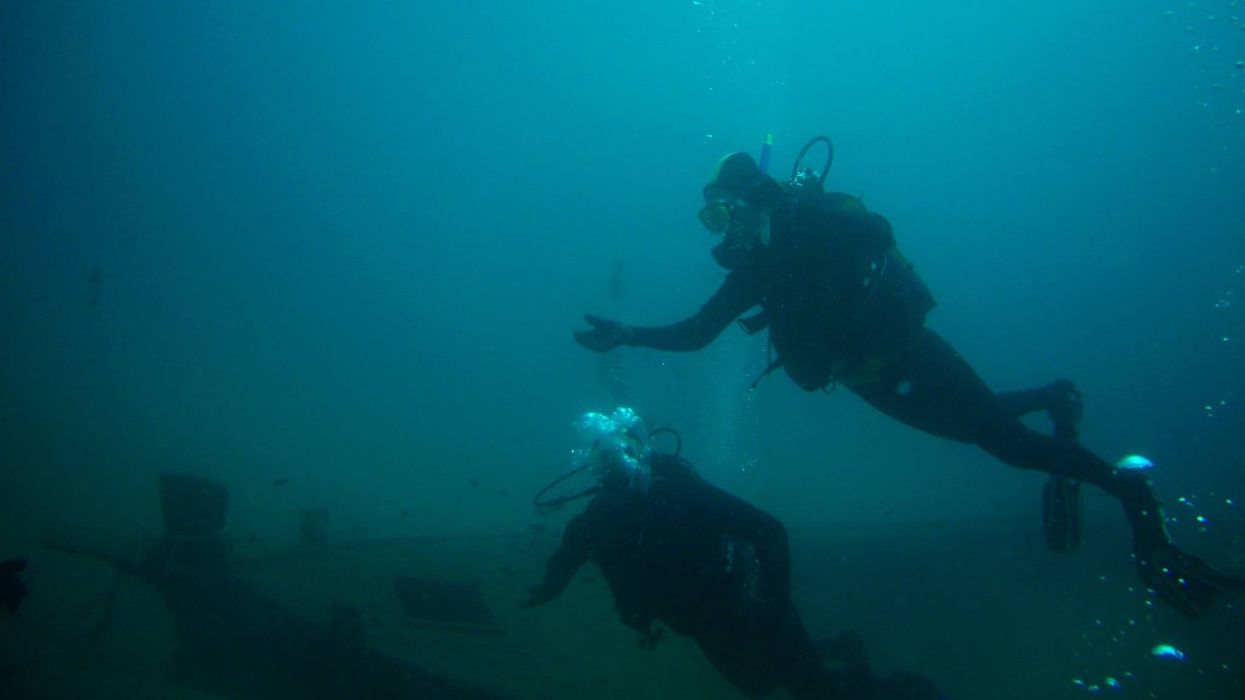DIY Solutions for Shooting Underwater and in Deep, Dark Caves
Here's what one filmmaker learned from her underwater experiments while shooting a film about deep sea exploration.

[Editor’s note: No Film School asked artist and experimental filmmaker Shanna Maurizi to share her experiences with underwater cinematography in caves for her current film ‘Explorer’.]
My new film Explorer wends its way through the void, following logbook entries that re-imagine the “explorer” and what is being explored. Moments from the films of Jacques Cousteau are restaged underwater, as a new narrator searches for sunken treasure and animal life. Production required me to do something I had never done before: shoot underwater, including in situations where I couldn’t get in the water myself.
I had been invited by the Museum of Modern and Contemporary Art in Rijeka, Croatia to complete the film in Central Europe, and the museum was immensely helpful as I planned shoots in remote caves and underwater in the Adriatic Sea.
I found the best shots were obtained by fixing myself on the sea floor like a tripod.
Shooting underwater when you can’t go underwater
The first location was a vast water cave with spectacular karst formations. I wanted to film underwater in the series of underground lakes, which are traversed by boat. Unfortunately, I couldn’t actually get in the water for ecological reasons, so I fabricated a remote pole out of PVC pipe in the museum workshop. The camera rig, an Ikelite housing with the Blackmagic Pocket Cinema Camera (BMPCC) inside, was small enough to make this possible, but also had enough heft to give it some stability.
Dealing with deep darkness

The buoyancy factor
Shooting in the Adriatic was my first experience with fully underwater cinematography and, I have to admit, it wasn’t easy. The first challenge was buoyancy. The camera and housing had a severe positive buoyancy in the Adriatic, which is a pretty salty sea. I tied some fishing weights on and got that under control. It’s recommended to keep your rig a bit heavier than neutral, because if you lose it, it’s easier to find it on the bottom than floating in the sea.
The constant motion of the water and the difficulty of swimming without using your arms make it hard to keep camera movement smooth.
Balancing camera gear with scuba gear
Of course, a major hurdle was that I had to learn to scuba dive. I had excellent training at Marco Polo Dive Center, but this did not prepare me for the practicalities of shooting. Divers use both of their hands, one for the Buoyancy Control valve and one to keep pinching their nose to equalize the pressure in their ears. Not attending to either of these things can lead to real problems.
So how do you use both of your hands to hold and operate a camera? I’m still not really sure, but I found the best shots were obtained by fixing myself on the sea floor like a tripod. Swimming shots are a challenge, as the constant motion of the water and the difficulty of swimming without using your arms make it hard to keep camera movement smooth. Experienced divers confirmed that it’s impossible and the best way is to slow down the footage.

Compensating for underwater light intensity
On the training dives, I tried to estimate the intensity of the light underwater. On the first shoot, I had estimated accurately, and the exposure worked great. On the second shoot, I accounted for the deeper depth by opening up two stops, but once I descended to the shipwreck site, it was much brighter than I expected. Luckily, this shoot was saved by the wide range in the Raw DNG capture of the BMPCC. The camera worked well for the project throughout, as I had the dynamic range to allow real creativity with the cine lenses, which had no motor control in the housing.

Staying aware of your surroundings
Another issue I encountered was that intense focus on shooting and repeating takes makes you unaware of your surroundings in the water. Being utterly mesmerized by the scene around me, I hadn’t noticed that my shot parallel to the sea floor was actually dropping in depth, and repeating it over and over was not ideal because of pressure changes.
Shanna Maurizi’s film ‘Explorer’ is currently in post-production and will be completed in the spring of 2017. Maurizi is an artist and experimental filmmaker living and working in Brooklyn, New York. Her work has been exhibited widely in California and New York, as well as the Netherlands and Central Europe.












